Just a few shots of the juvenile startling starlings fighting for fatballs. The adults have fledged about eight noisy juveniles into our garden so far, I estimate.
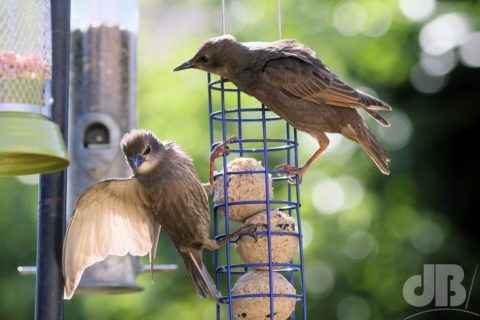
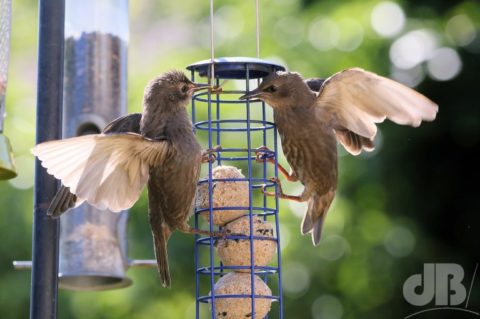
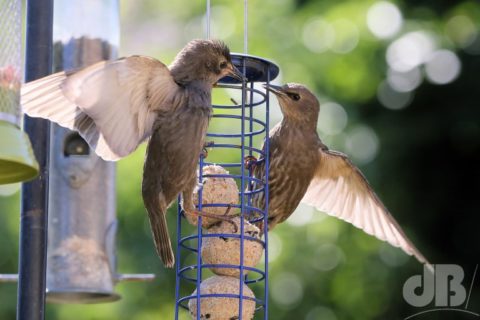
36.2055 years in science communication
Just a few shots of the juvenile startling starlings fighting for fatballs. The adults have fledged about eight noisy juveniles into our garden so far, I estimate.



What do Sciencebase readers make of the view that there will far more long-term excess deaths and misery caused by the global lockdowns than there would have been had we let this coronavirus run free? This question is about estimating the serious long-term effects rather than giving those covidiots who fancy a trip to the beach or Barnard Castle an excuse to run wild and party. It is being discussed widely by many lockdown skeptics, including very well-respected scientists such as Mark Changizi.
Obviously allowing the virus to run free would have meant overwhelming our healthcare services and there’d have been many more acute tragedies around the world. But, in the long-term the economic and social damage will ultimately lead to greater levels of suffering on a much wider scale. Ultimately, there will be many more excess deaths some argue*. This will be partly due to delayed diagnosis and treatments that will be available to everyone “after” Covid-19. It will also be partly due to mental health problems that emerge leading to an increased suicide rate caused by the loss of employment, companies collapsing, and the general negative effects of the “new normal”.
*News in today suggests that the death rate in France is the lowest it’s been for several years even when compared to a bad flu year.
Personally, I believe lockdown is the right thing to do for the sake of the more vulnerable and to avoid that overwhelming of the healthcare systems. We can try to face the issues that emerge post-Covid as they arise.
Random selection of Curlew photos I’ve taken over the years, none of them anywhere near Barnard Castle, but some on the coast in the North East, others in Norfolk and Suffolk.
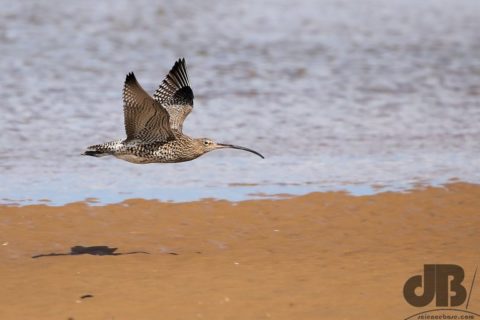
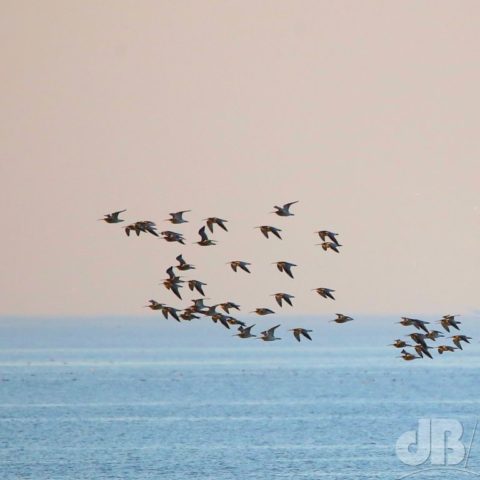
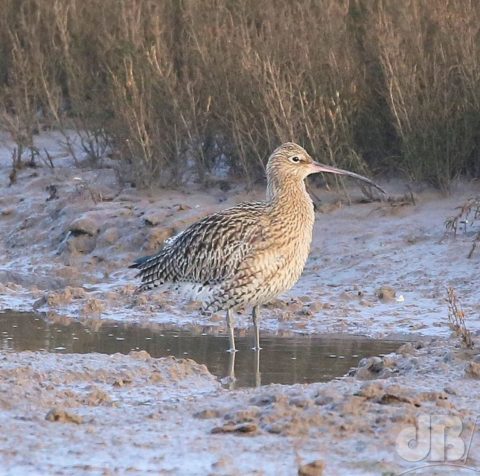
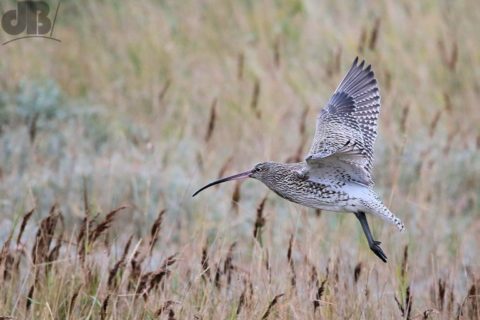
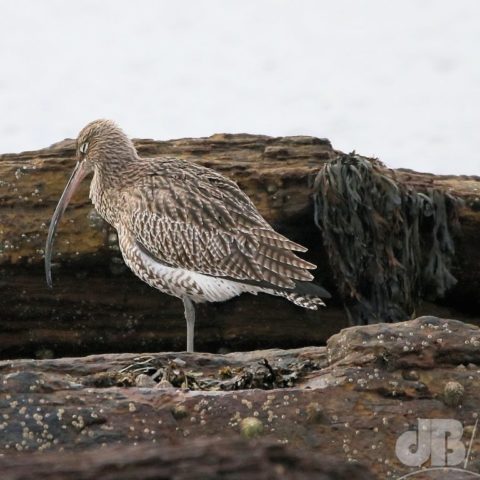
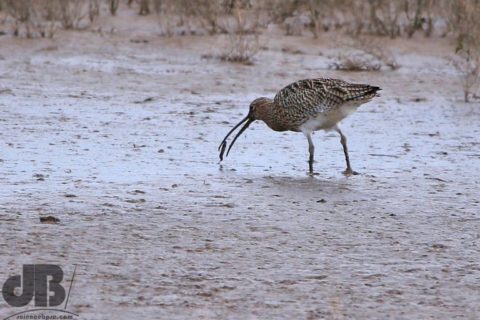
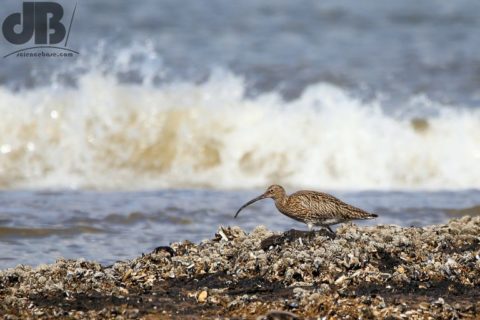
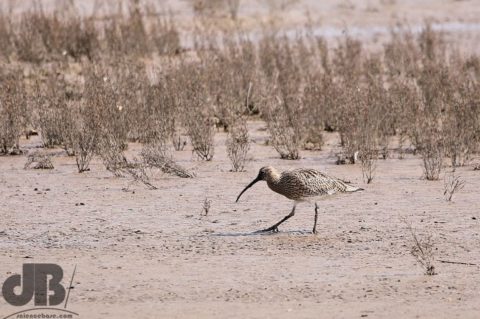
We’ve had a not-too-bad time of it, so far, to be fair, physically if not so much mentally. Other than not being able to get to a beach or legitimately visit a nature reserve, and putting holiday plans on hold, and cancelling all C5 the Band gigs for the summer and not being able to rehearse with those lovely people nor the lovely people of the TyrannoChorus, and not being able to take that nature holiday nor go camping, and having to work under the stress of a full house again having been almost empty-nesters for several months, and Mrs Sciencebase not being able to do either of her part-time work activities, the dog getting old and a bit lame, and not being able to visit family and friends, and…well, woe is me…but woe is millions of others who are suffering far worse, it’s been fine really.
I still wake far too early after tormented nights of viral existential anxiety, which does seem to have displaced the more mundane “worrying about death” kind of anxiety, but the getting up early at this time of year is critical for a moth-er, anyway. So there are pros.
So, I plough on through my usual writing deadlines, all of which are still ever-present (thankfully), but in between I seem to have taken on a village role of sharing interesting and entertaining online stuff, un-Events, you might call them. I morphed my Fen Edge Events group to do that at the start of lockdown and it’s still going strong; came up with several ideas for alternatives to local events that can no longer happen in the real world.
In among that I seem to have piled in with what I think is some creative activities, although others may disagree: Saturday Night No-Fever dancing in the living room with masks and nitrile glove, PondWatch, LawnWatch, RockWatch, and LogWatch. There was the dancing cookathon of Rock-around-the-Wok with DJ Bethan Fettermean, a virtual open mic session and a VEDay75 musical montage, several spoof phone calls, messages from Trunt and de Pfecking Johnson, our so-called Leader, and a wiretap acquisition of a call between some bloke called Dom and his Mam in the North East. I’ve done a spoof radio show based on my BFF’s More Music Breakfast on ClassicFM. I’ve written and recorded several new songs and instrumentals around the viral anxiety theme, although none of them are as depressing as that sounds.
There are also the endless moth, bird, and wildlife photos too.
Feels like a creative time and I’ve certainly seen a lot of creativity out there now that some many people are in lockdown, with the exception it seems, of that gadgy called Dom. But, to be honest, other than the travel restrictions, we’re lucky, not a lot has really changed, part of the advantage of having worked for myself from home for so long, I suppose.
Anyway, to you stay well. Stay home.
People often talk of liking butterflies but disliking moths. Butterflies are to all intents and purposes scientifically speaking, a sub-group within the moths. Arguments about flying at night, about clubbed antennae, and regarding wing posture are moot.
There are both moths and butterflies that are diurnal and others that are nocturnal. Indeed, there is sexual dimorphism in some species, e.g. Emperor moth, which looks “like a butterfly” and the males fly during the day and the females at night.
There are examples of clubbed antennae in moths and hooked antennae in butterflies (Skippers for example, which are borderline between moth and butterfly in the broadest descriptions).
There are countless moths that lie flat and many that fold their wings like butterflies purportedly do but there are butterflies that lie flat too.
The distinction is fundamentally one of linguistics in that English has Latin and Anglo-Saxon roots and so often has duel words for everyday things (mushrooms & toadstools, frogs & toads, tortoises and turtles), whereas in non-dualling languages on the continent from whence the Romans and the Saxons came, there’s no such distinction.
Anyway, words are words, these are beautiful living creatures worth our respect and given that there are 1800 different species of Lepidoptera (scaly-winged insects) in the British Isles, there’s a lot of diversity.
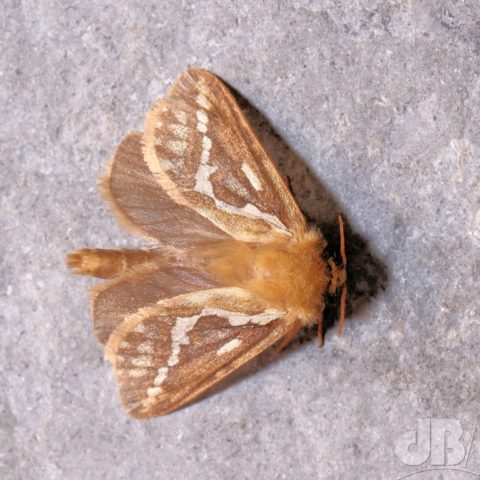
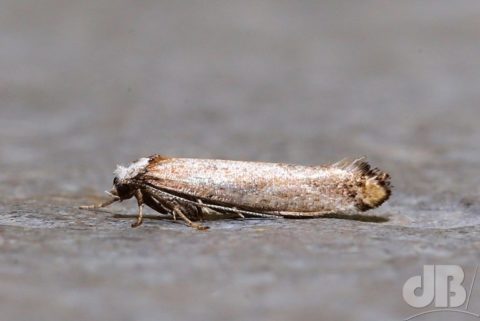
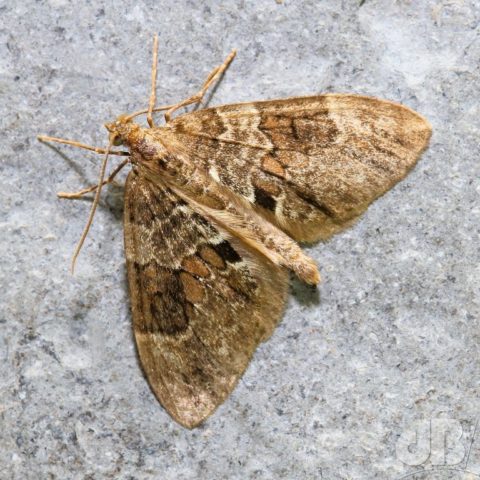
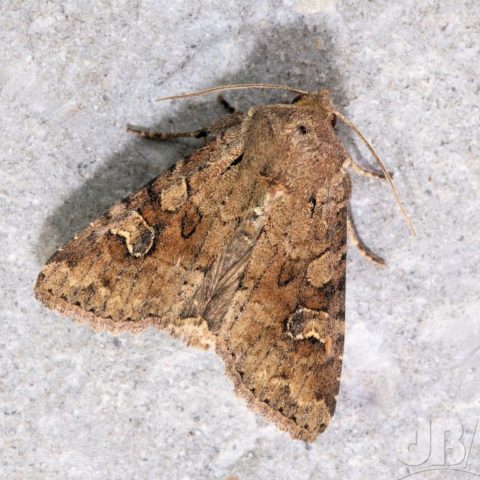
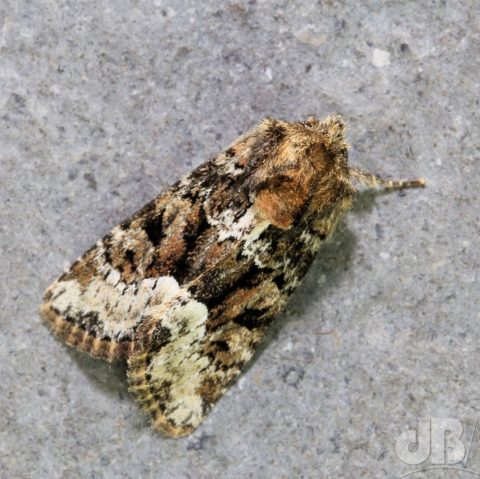
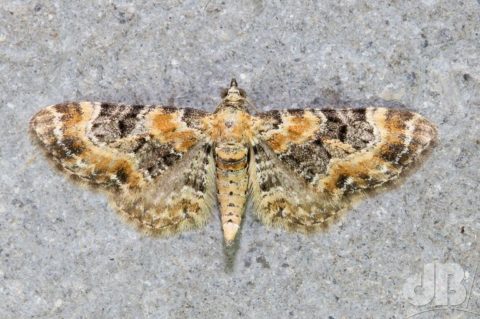
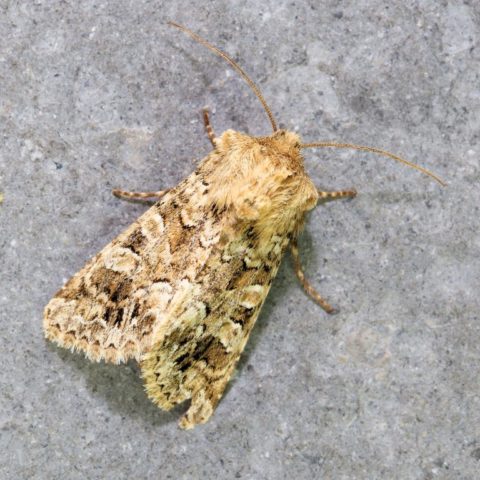
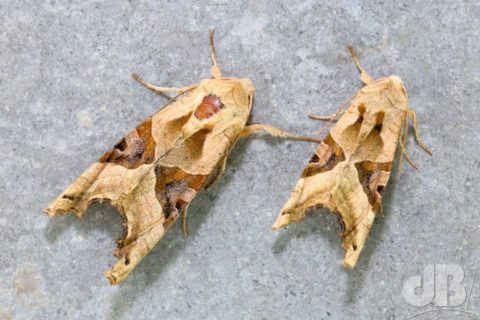
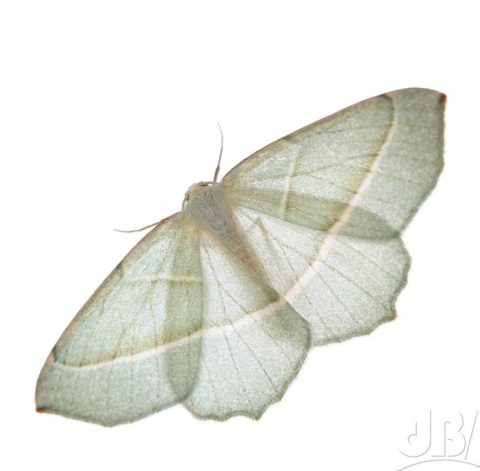
Working undercover with a northern lass called Leanne, I’ve managed to acquire the wiretap tape of a conversation between a bloke called Dom and his Mam in the North East…
Ring, ring
Dom’s Mam: Hellooo…0191 24242424
Dom: Hello Mother it’s me Dom. How are you, I mean, Y’areet Mam, hope you’re not feverish or coughing or anything
Dom’s Mam: Eeh, hello our Dominic, pet, lovely to hear your voice, I know you’re busy with all that eugenies stuff, so I won’t keep you
Dom: Narrh, it’s alreet, I rang you, didn’t I? Anyway, you’re birthday’s coming up…shall we bring the bairn up to see you?
Dom’s Mam: Eeeh, that’d be lovely pet, but what aboot the lockdown rules and that covfefe virus, like though?
Dom: Aah, divvent worry about that, I’ve got it covered
Dom’s Mam: What do ye mean covered?
Dom: Well, we think Mary’s got Covid like already so she’ll have herd immunity by now, which is like what cows get when they meet a badger, like, so we’ll use that as an excuse to bring the bairn up so you can look after him while we isolate
Dom’s Mam: But, isn’t that breaking them rules, like, it says on the government’s webshite that you should stay hyem if somebody’s ill with it in yer hoos.
Dom: Aye, it’s nay worries though, I wrote the rules, I can break them
Dom’s Mam: Eeh, we never brought you up to be like that our Dominic
Dom: Narrh, it’s fine Mam, we’re coming up anyway, I’ve got me ABBA CD and the bluebells are out at Barnard Castle, it’ll be geet lush, we’ve wrapped yer pressie already…spoiler alert, haha.
Dom’s Mam: Well, if you really think it’s safe to travel 250 miles with all of you possibly ill and risk getting delayed or having an accident and having to stop at all them horrible services and bring the bairn even though yer Dad and me are old, like, and vulnerable, it’d be lovely to see you…divvent worry aboot a present for’uz though, just seeing you all will be present enough
Dom: See you at the weekend, tara Mam and Happy Birthday…
Dom’s Mam: Aye, okay, see you then, don’t waste any more minutes now, pet, tara, love you.
Always nice when someone notices you got a nice sharp and detailed photo. Happened this morning with a snap of a Figure of Eighty moth that was drawn to the actinic lure last night.
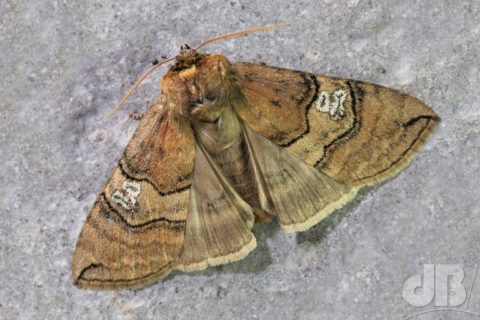
This Figure of Eighty moth was shot with a 90mm Tamron 1:1 lens on a Canon 6D digital SLR. Importantly, on a tripod with a shutter release wire, using Live View (on the rear screen, the camera’s mirror is raised) rather than allowing the mirror-raise to cause vibration as happens with a viewfinder shot. Obligingly, the moth lay flat and spread its wings, usually it curls them around its body to make a kind of twig-like tube.
This is a single frame with f/13 aperture, 1/90s shutter speed, ISO 500.
I almost always crop the original frame to get a nice composition. I adjust the levels/histogram to blacken the blacks and whiten the whites slightly. I always lift the mid-tones slightly to soften any shadows on these kinds of shots, but nothing more than about 10-15 percent values.. I also pull down the highlights slightly if there’s been any blowout. Increase the saturation a tiny bit and apply a gentle standard sharpening. All in PaintShopPro.
The final crucial step for social media upload sharpness is then to resize the frame to 2048 pixel width. There’s no point in posting full size to Facebook or Instagram as their compression algorithms do something horrendous to bigger files and you end up with more artefacts and a less clear, less detailed image. After this resize I may up the vibrancy (which is a more subtle variation of increasing saturation that only boosts certain pixels to make the colours “pop”. I then apply a fairly subtle unsharp mask. If the image has been cropped to less than 2048 but not smaller than 1000 or so I apply the same unsharp. If it’s < 1000 I’ll pull back the unsharp a lot.
I then add my dB/ logo in the right-hand corner. As you might have noticed, there wasn’t room for the logo in the pre-processed image, so I rotated it and clone the stone background to fill the resulting gaps and then added my logo. I think it usually gives me a half-decent end result.
Here’s the original frame straight out of the camera, saved as a 90% JPEG rather than RAW, I rarely shoot raw…it was cropped and resized to fit the page here. It’s sharp (in focus) but dull and lifeless.
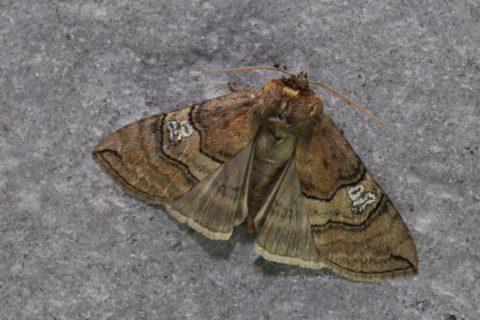
UPDATE: The Corn Cockle finally came through, lots of them, it’s well past flowering now and I have harvested lots of seed for next year.
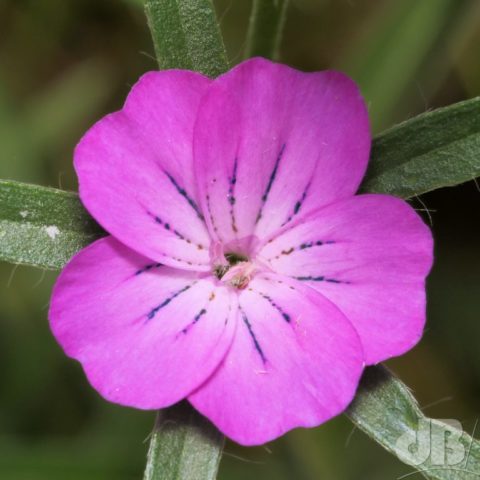
UPDATE: The corn-cockle is yet to grow in our garden, the pictures are of another species entirely, something Borage like, apols.
Part of “wilding” involves scattering seeds from wildflowers…and hoping they’ll germinate and grow, flower, be pollinated, and set seed for next year. I borrowed some corn-cockle seed from a fellow #AllotmentLife person, and it’s now in bloom with invertebrates constantly in and out of the flowers.
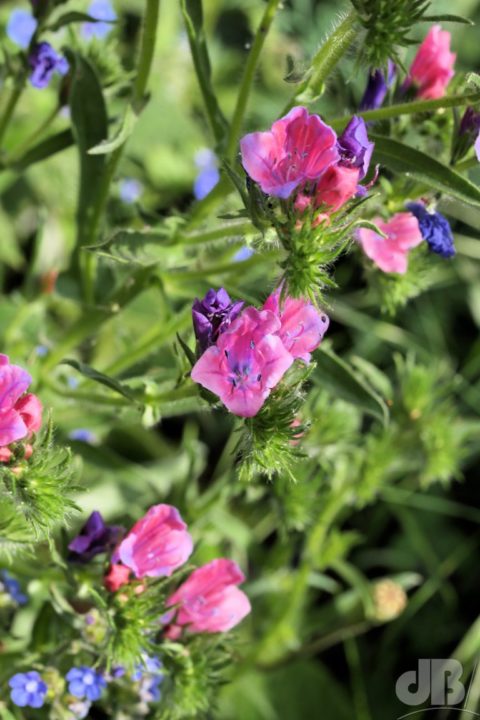 This wildflower species, Agrostemma githago, was thought to be extinct in the British Isles until a specimen was spotted in Sunderland of all places by a National Trust assistant ranger in 2014.
This wildflower species, Agrostemma githago, was thought to be extinct in the British Isles until a specimen was spotted in Sunderland of all places by a National Trust assistant ranger in 2014.
It was a common species to grow in wheatfields until the introduction and widespread use of herbicides. It can now be found in fields, roadsides, railway lines, waste places, and other disturbed areas, now including our back garden.
A word of warning, as with many other wildflowers, and indeed, some cultivated flowers, all parts of the plant are poisonous as they contain the natural products githagenin (githagin, gypsogenin, (3β)-3-Hydroxy-23-o

Thankfully, the corncockle has grown and bloomed in our garden since I wrote this post. Here, short discussion.

I live-tweeted a fascinating and perhaps rather depressing meeting with William Haseltine via a Reuters Newsmaker Broadcast. His talk was upbeat but the message does not offer a positive outlook unless we can collaborate internationally to identify, trace, and isolate and go back to early antivirals to treat people urgently. A vaccine will probably never be found, we must stay on top of this virus when we get communities under control. Moreover, we must recognise that another emergent pathogen could appear any time.
These are essentially my notes from Haseltines’s talk.
Might we ever achieve herd immunity?
There is no herd immunity. It doesn’t exist for any other coronaviruses, it is unlikely this one will be an exception. Sweden is a bad example of controlling this pandemic because they chased herd immunity.
Don’t assume because you’ve been infected you are immune, even if you had an antibody response. This virus doesn’t have to change to re-infect, probably because it gets in through respiratory mucus membranes, this means a vaccine may never protect as they don’t protect such membranes. Vaccines work in the blood.
Remember, as long as one person in the world is infected, we’re all at risk. This pandemic started with one person, after all.
The US has to collaborate with China. We’re one world, we need a one-world solution. We’re not in a race, this isn’t a competition, we’re one species. We have to work together against this virus.
If not a vaccine, then treatments?
Monoclonal antibody infusions may be the first line of therapy to work and then possibly small-molecule antiviral drugs. We may never have a vaccine. Do not count on the possibility of a vaccine. See also HIV. The SARS and MERS vaccines didn’t work…but we can control it by identifying infection, tracing people, and isolating them (controlled quarantine with healthcare). This has worked in Beijing and even Wuhan.
Don’t even need to test. If you’ve been in contact – isolate!
Opening up is possible but needs full contact tracing and quarantine and immediate lockdown if there’s an outbreak. We have to look at this as a long-term approach: identifying those infected, isolating them, tracing their contacts, and putting placing them all in quarantine. Summarily.
Monoclonal antibodies are expensive and will need blends of 2-3 to overcome viral mutations. Chemical therapies [pharmaceuticals] will be cheaper and easier…when we can identify the compounds that work. But will companies make them affordable?
What about Trump’s claims to be taking a drug for this disease?
Hydroxychloroquine doesn’t prevent or treat the disease and if you have heart problems it can kill you. Trump’s probably not taking it and he’s saying he is for purely political reasons to encourage people back to work in time for the presidential election. Science denialists and antivaxxers are a big problem.
This virus is transmitted all summer long but will peak in the winter as do some other viruses. We don’t know why. Some viruses like rhinoviruses and polio peak in the summer. [Incidentally, polio is airborne, facemasks would have prevented its spread rather than avoiding swimming].
There’s a Covid-19 spike in Mumbai where it is hot and humid, right now. When the winter flu comes around again will it overload our hospitals when beds are still needed for Covid patients
Did we learn nothing from earlier epidemics, such as AIDS, SARS, MERS?
The scientific and medical community learned a lot…that might all be applied to the current virus. But in some cities 70% of 15-25 females are still infected with HIV. Some parts of the world learned from SARS etc, but did we? We’re part of nature, we can’t control it. Viruses are part of nature. We knew this was coming, it was predicted, but we have to prepare for the next one, this is not the last. Devastation to lives, economies, opportunities. We have to prep ourselves.
We need to strengthen education so people understand science and technology for the next time…strengthen our healthcare systems, overcome the science denialism.
Also, learn from Singapore and don’t neglect neglected communities such as migrant workers [and ethnic minorities] they need to be protected too!
What are the wider impacts?
National debts are going to be 5-10 times bigger than they were at the start of the pandemic, this means more taxes, this means limited opportunities for investment and for young people, for everyone…
As an e.g. of that Jeremy Corbyn’s “debt” plans if he’d got 5 years as British Prime Minister have already been exceeded massively in the UK by the government that beat him.
Might we find anti-viral drugs?
There are half a dozen antivirals that were developed for SARS that might work against Covid, but they were never stockpiled so we don’t have them to use right now. We have stockpiles of anti-anthrax drugs and treatments for bioweapons. We could’ve stockpiled against this natural terrorist.
We need to use all the scientific tools we have to defend ourselves against all the future threats too…governments are there to protect us, but they’re not doing that…they should be not just bioterrorism but natural terrorism.
We’re learning things all the time about how someone might seem to have recovered but then suffer effects weeks later, we need to understand why. At the beginning of the crisis, 90% of people on ventilators died, but then they spotted blood clots were killing so now using anticoagulants and that has fallen to 30%..
School’s out forever?
The rules of this coronavirus are not any different from common cold transmission…this is essentially a lethal cold virus…you catch colds easily from children [See also polio]. Multiple-organ effects can kill children. This is not a simple pneumonia.
What about travel and holidays?
It’s going to be a long, long time before we get back to travelling the world…especially for Americans…the rest of the world doesn’t want them coming to their countries.
Could the virus have started somewhere other than the Wuhan market?
Yes. Easily. Someone could’ve turned up infected and entered the market. But the viruses are coming along all the time from animals. It’s very, very unlikely that it came from a lab. [It didn’t, in other words].
Footnote
Dr William Haseltine is a scientist, businessman, and philanthropist. He is well-known as a pioneer in the fight against HIV/AIDS and cancer. He was in conversation with Reuters Global Managing Editor Alessandra Galloni on 20th May 2020, with additional questions from invited representatives of the media.
UPDATE: Two bio friends on Facebook came back with two different answers when I posed this question there. Grace Baynes pointed to a paper about genetic changes in stems from the same specimen of Mimulus (monkeyflower) plants here. The keyphrase in the paper “monkeyflowers mutate as they grow”.
Julie Webb posted: tranposable elements and pointed to a paper suggesting that this can occur because of viral infection, here.
I planted up some aquatic plants in #PondLife as regular readers will know. Among them a few Mimulus in a pot. They’re in full bloom right now. Big, buttery yellow horn-shaped flowers with patches of burgundy red and ruddy spots leading into the flower.

Now, at some point early in Covid lockdown, I plucked some of the shoots protruding from the basket of Mimulus and planted them in another basket-pot in the pond with some nutrient-depleted aquatic compost (as I had with the initial bunch).
The new shoots took well and one of them bloomed a week or so ago. Same horn-shaped flowers, same colours, but a lot smaller than the make crop.
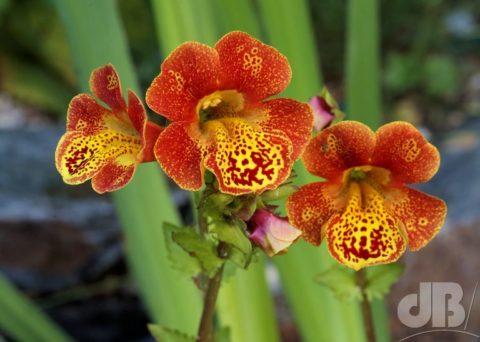
However, this morning more of the offshoots have bloomed and they have produced similar small flowers but with a very different pattern and colour scheme. Now, if these had been grown from seeds from the original plant I’d have invoked Mendelian genetics to explain the colour variation. But, these offshoots are as the name would suggest shoots off the original plant. They’re genetically identical, they’re not even clones, they’re simply bits of the original plant…